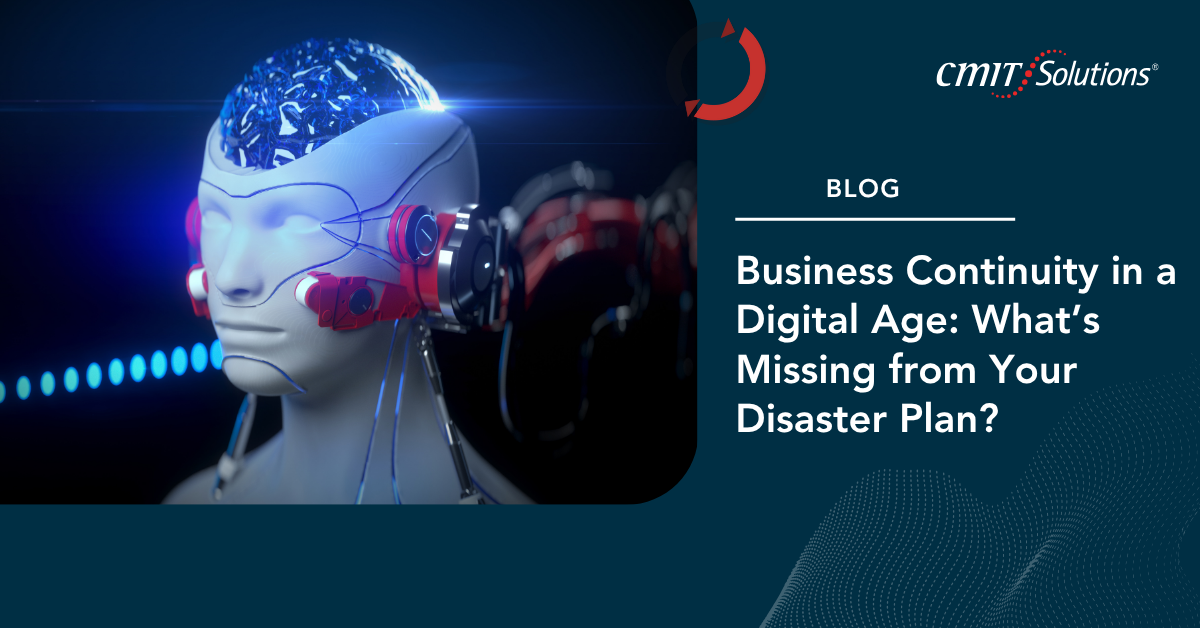What Is Business Continuity Planning?
Business continuity planning (BCP) is a strategic framework that ensures your organization can maintain operations or quickly resume after a disruption. Whether the event is a cyberattack, natural disaster, ransomware incident, or system outage, your BCP should outline how to mitigate damage, restore services, and safeguard sensitive data.
It’s not just about backups. Effective continuity plans cover personnel coordination, infrastructure redundancies, remote access strategies, and more. Disaster recovery planning is a critical part of this, but business continuity takes a broader approach—addressing both prevention and long-term resilience. Working with experts who offer comprehensive managed IT services ensures that your plan goes beyond hardware and includes risk assessment, recovery mapping, and team-wide coordination.

Why It Matters in the Digital Era
Today’s businesses rely heavily on digital infrastructure. This means threats don’t just disrupt systems—they can bring operations to a grinding halt. Without a comprehensive strategy, even a brief outage can cause customer churn, lost revenue, compliance violations, and brand damage.
Companies that implement multi-layered security protocols as part of their continuity strategy stand a better chance of surviving unexpected disruptions. CMIT Solutions of Bothell and Renton helps SMBs address this with advanced tools that protect against both human error and external cyber threats. Their solutions include endpoint protection, real-time monitoring, and disaster simulations designed to uncover gaps before a real event tests your resilience.
Common Gaps in Disaster Plans
Many organizations believe they have a continuity plan—until it’s tested. The most common gaps include:
- Infrequent data backups or testing
- No offsite or cloud-based redundancy
- Inadequate incident communication procedures
- Lack of endpoint protection coverage
Without these components, recovery time increases and data loss becomes more likely. Investing in proven tools like endpoint protection and centralized monitoring ensures you can respond to threats proactively rather than reactively.
Additionally, cloud services can provide rapid recovery environments in case your on-premise systems fail. Relying solely on local infrastructure leaves you vulnerable to hardware failure, power outages, and regional disruptions.
The Role of Unified Communications
A key but often overlooked component of modern BCP is unified communications. In a disaster scenario, employees need secure and efficient ways to stay connected—whether in the office or remote.
UC platforms integrate email, video conferencing, VoIP, and messaging under one dashboard. CMIT Solutions helps configure tools that ensure your teams maintain productivity even when physical access is compromised.
Modern Tools for Continuity and Recovery
Your disaster plan should be built around the tools that support agility and recovery. These include:
- SIEM tools that detect unusual patterns and issue alerts in real-time
- Microsoft Intune for secure mobile device management during remote operations
- Cloud-first architecture that enables redundant failovers
- Secure email gateways to filter malicious traffic
Solutions like Microsoft Sentinel and cloud infrastructure management help SMBs prepare for a future where disruptions can happen anywhere, anytime.
Why SMBs Need Managed IT Services
Most small businesses don’t have the internal resources to manage full-scale business continuity planning. A trusted managed IT services provider fills this gap by offering:
- 24/7 monitoring and threat detection
- Routine updates and cybersecurity management
- Backup and disaster recovery automation
- Regulatory and compliance support
With CMIT Solutions of Bothell and Renton, SMBs get access to proactive services that keep business operations resilient, regardless of the situation. It’s not just about defense—it’s about ensuring uptime and continuity.
Compliance, Risk, and Legal Considerations
Ignoring business continuity planning doesn’t just risk downtime—it could lead to fines, data loss, and legal action. Sectors like healthcare, finance, and retail must meet regulatory standards, which include:
- HIPAA compliance for healthcare providers
- PCI DSS for retailers processing payments
- General IT governance for all organizations
CMIT Solutions provides compliance-focused guidance so SMBs can implement data security strategies that align with these evolving requirements. Their support ensures that your disaster recovery plan also satisfies auditors and regulatory bodies, reducing the likelihood of fines or license suspensions.
From Backup to Full Continuity: Evolving Your Plan
Too often, businesses assume backups are enough. But restoring a server is just one step—what about customer access? Vendor communication? Internal workflows?
Moving from reactive backups to comprehensive continuity means adopting real-time cloud services, using hybrid infrastructures for flexibility, regularly testing failovers, and updating protocols as your business evolves.
CMIT’s cloud-first disaster recovery models empower small businesses to grow securely while preparing for the unknown. Their services include automated backups, encrypted storage, and geographic redundancy for peace of mind.
Collaboration, AI, and Productivity Tools
As your workforce becomes more digital and distributed, incorporating collaboration tools and AI is essential for agility. Technologies like Power BI, Teams, and AI assistants can enhance visibility and performance—but only when integrated securely into your continuity plan.
With threats like ransomware and phishing on the rise, CMIT integrates email security solutions and intelligent automation to reduce risks while improving workflows.
Conclusion
In a digital-first economy, downtime is more than an inconvenience—it’s a risk to your future. Business continuity isn’t just a checklist item; it’s a living, evolving discipline that ensures your operations continue no matter what.
Partnering with experts like CMIT Solutions of Bothell and Renton ensures your business continuity plan includes the right technology, the right processes, and the right support. With integrated solutions like cloud management, backup automation, and unified communications, you’ll be ready for anything—before disaster strikes.
If your plan hasn’t been updated for the digital age, now’s the time to fill in the gaps and build true resilience.






